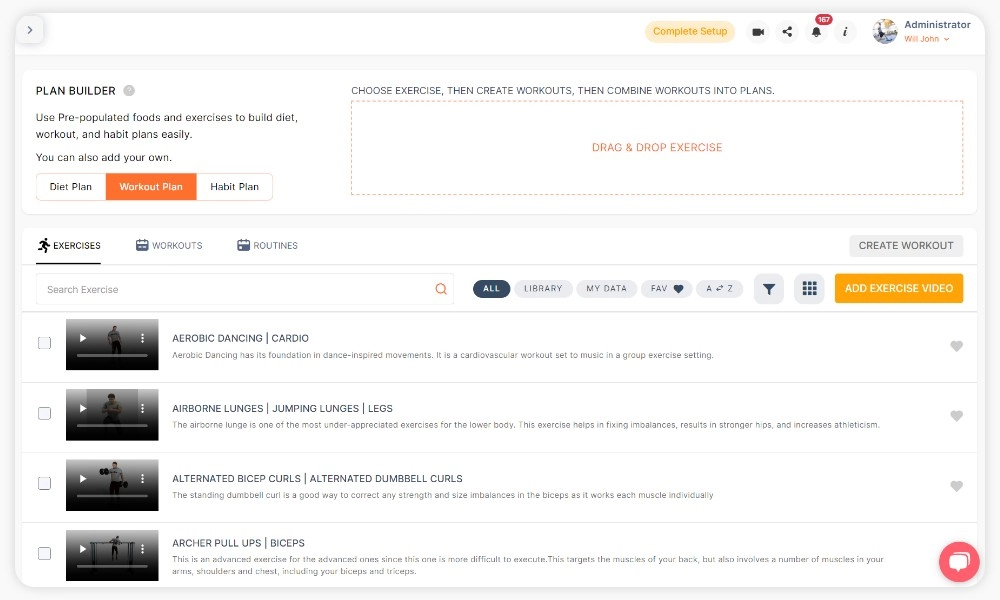Customer Lifetime Value (sometimes abbreviated as LTV and more often as LTV) is a concept that refers to the total value a customer brings to a business over their entire lifetime as a customer.
It is an essential metric for any business looking to build a loyal customer base, and the fitness industry is no exception. In this article, we will discuss the importance of LTV for gyms and personal coaches, how to calculate it, strategies for improvement, challenges, industry trends, external factors, case studies, and provide a conclusion with recommendations.
LTV is particularly important for gyms and personal coaches for several reasons. Firstly, the fitness industry is highly competitive, and customer acquisition costs can be significant.
It is much more cost-effective to retain existing customers than to acquire new ones continually. Therefore, increasing LTV can lead to higher profits by reducing the need for expensive fitness marketing and advertising campaigns.
Secondly, loyal customers tend to spend more money over time. As customers become more familiar with a gym or personal coach's services, they are more likely to purchase additional products or services. For example, a gym member may start with a basic membership and then upgrade to a premium membership, purchase personal training sessions, or buy merchandise such as gym apparel or supplements.
Finally, loyal customers are more likely to refer new customers to the business. Word-of-mouth recommendations are powerful, and they can help gyms and personal coaches attract new customers at a lower cost.
Calculating LTV for gyms and personal coaches involves several steps. Firstly, determine the average revenue generated by a customer over their lifetime with the business. This can be calculated by multiplying the average purchase value by the number of purchases made per year and then multiplying that by the number of years the customer is expected to remain a customer. The formula for calculating LTV is:
LTV = (Average Purchase Value x Average Number of Purchases per Year x Average Years as a Customer) - Customer Acquisition Cost
The customer acquisition cost is the total cost of acquiring a new customer, including marketing, advertising, and sales expenses. Since you’re averaging across all customers, you can include the cost of maintaining your fitness website, for example.Subtracting these costs from the total revenue generated by the customer gives the LTV.
Several strategies can be employed to improve LTV for gyms and personal coaches. Firstly, providing excellent customer service is crucial. Responding promptly to customer inquiries and concerns, providing personalized training programs, and offering additional services and products can help build a strong relationship with customers.
Secondly, offering loyalty fitness business programs or rewards can incentivize customers to not switch to competitive businesses. For example, a gym could offer a free video coaching session or gym apparel for every ten gym visits.
Thirdly, upselling and cross-selling can increase the average purchase value. Personal coaches could recommend additional training sessions or offer personalized nutrition plans to their clients. Gyms could offer discounts on supplements or apparel for members who upgrade to a premium membership.
Measuring and improving LTV can be challenging for gyms and personal coaches. Firstly, it can be difficult to track customer behavior and purchases accurately. Many customers use multiple channels to interact with the business, such as in-person visits, online purchases, and social media engagement. Therefore, it is essential to have a comprehensive customer relationship management (fitness CRM) system to track customer behavior and purchases accurately.
Secondly, it can be challenging to determine the customer's lifetime value with the business accurately. Many factors can influence a customer's decision to remain a customer, such as changes in their personal circumstances or preferences. Therefore, it is essential to regularly survey customers to understand their needs and preferences continually.
Several industry trends and external factors can impact LTV for gyms and personal coaches. One trend is the increased focus on health and wellness, which has led to more people investing in fitness-related products and services. This trend has created more opportunities for gyms and personal coaches to attract and retain customers. However, the increased competition in the industry also means that businesses must be innovative in their approach to stay ahead of the curve.
Another external factor that can impact LTV is the emergence of new technology, such as wearables and fitness apps. These technologies have enabled customers to track their fitness progress and monitor their health more easily, which can lead to increased engagement with fitness-related products and services. However, gyms and personal coaches must also adapt to these changes by offering personalized training programs and integrating technology into their services to remain competitive.
Several gyms and personal coaches have successfully increased their LTV through innovative strategies. One example is Equinox, a luxury fitness brand that offers personalized training programs, spa services, and exclusive events to its members. Equinox has increased its LTV by focusing on providing exceptional customer service and investing in technology to enhance the customer experience.
Another example is Fitbit, a leading wearable technology company (now owned by Google) that has expanded its services to include personalized coaching and nutrition plans. Fitbit has increased its LTV by offering customers a more comprehensive suite of fitness-related services, which has led to increased customer loyalty and higher profits.
If you’re not a giant corporation or owned by Google, you still have a great opportunity to increase Customer Lifetime Value for your company right here.
When you consider what tools to use for your fitness company, it can be overwhelming. That overwhelm that you feel is exactly the same as what your client feel.
When we set out to build MevoLife, we wanted to give coaches all of the tools to build a successful fitness business in a single platform. The fitness CRM we created contains all of those critical pieces to attract clients the first time and delight them thereafter. Integrated:
Marketing and communications
Solo and group video coaching
Scheduling for gym and virtual sessions
And a whole lot more.
Conclusion
In conclusion, Customer Lifetime Value (LTV) is a crucial metric for gyms and personal coaches in the fitness industry.
Increasing LTV can lead to higher profits, reduced marketing costs, and a loyal customer base. However, measuring and improving LTV can be challenging, and businesses must be innovative in their approach to stay ahead of the competition. By providing excellent customer service, offering loyalty programs and rewards, and integrating technology into their services, gyms and personal coaches can increase their LTV and build a thriving business.


